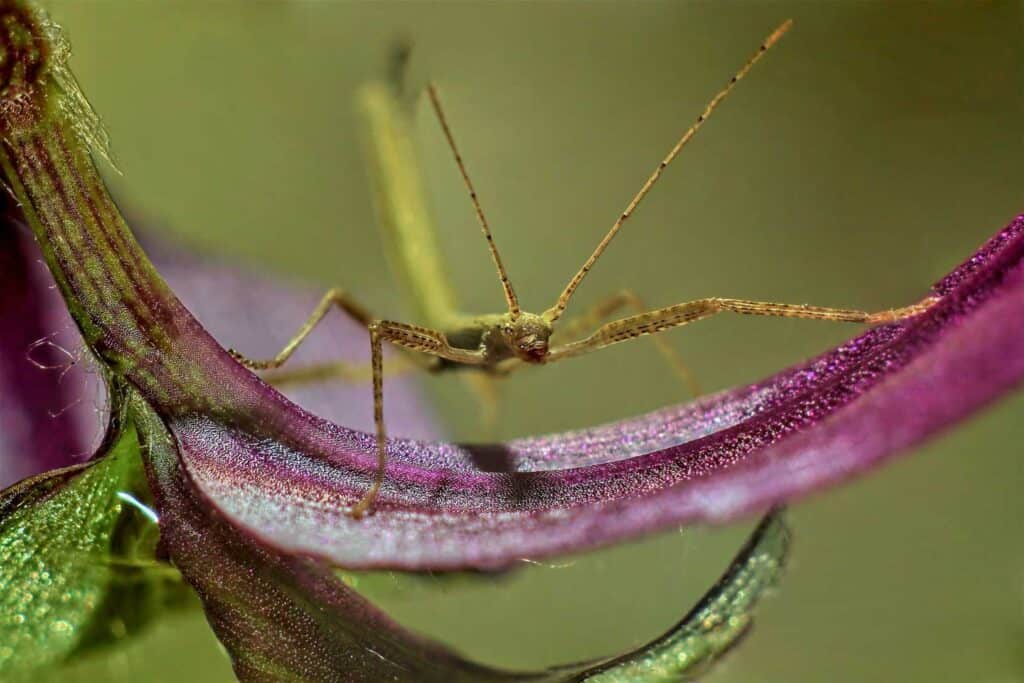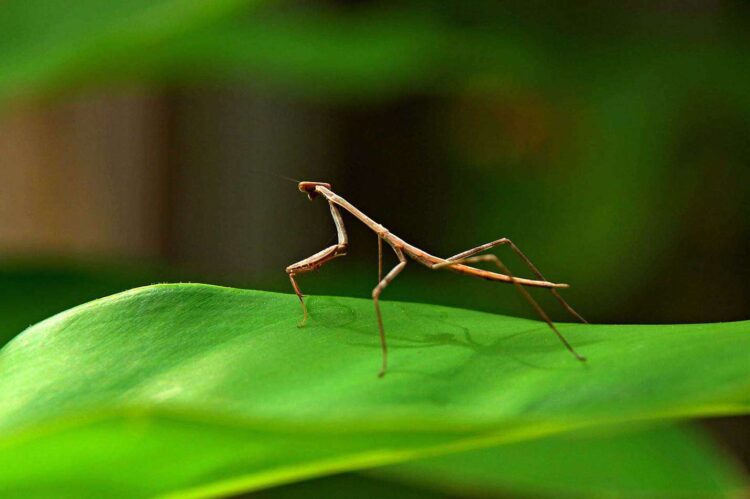Table of Contents
Stick insects – aka stick bugs, walking sticks, or phasmids – are fascinating and delicate creatures characterized by their unique appearance, way of life, and behavior. There are about three thousand species of stick insects, living on all continents except Antarctica.
Stick insects are not the most mobile of creatures and they happen to be somewhat limited in their movement repertoire. They are nocturnal creatures whose main aim is to remain motionless and undetected during the day, appearing to be twig from a tree or a blade of grass. This is why they are experts at standing still rather than moving around. Having said that, there are some winged species, such as the Thailand winged stick insect (Sipyloidea sp.), which are able to perform rapid evasive movements when caught in a tricky situation. This inevitably brings up a rather interesting question – can stick bugs actually jump?
(Sipyloidea sp.), which are able to perform rapid evasive movements when caught in a tricky situation. This inevitably brings up a rather interesting question – can stick bugs actually jump?
Generally speaking, stick insects cannot actually jump. Of course, as with many things in life, there are exceptions to every rule – like the Thailand winged variety of stick insect, for instance. This particular stick insect is one of few species able to perform both forward and backward jumping movements in response to physical stimulus or the detection of danger.
For more advice and information on keeping and looking after stick insects, check out my ebook on Amazon click here
(opens in a new tab).

Some Stick Insects Are Fast Jumpers
Indeed, research has shown that species such as the Thailand winged stick insect are super rapid in their jumping ability; they are able to perform instant and complex jumping movements that require the use of their entire body. Like all other insects, stick insects’ bodies are made up of head, thorax, and abdomen. All three body parts actively participate in preparing for, executing, and landing after a jump. The legs of a winged stick insect also play a key role in jumping.
that species such as the Thailand winged stick insect are super rapid in their jumping ability; they are able to perform instant and complex jumping movements that require the use of their entire body. Like all other insects, stick insects’ bodies are made up of head, thorax, and abdomen. All three body parts actively participate in preparing for, executing, and landing after a jump. The legs of a winged stick insect also play a key role in jumping.
A stick insect’s jumpy behavior and forward or backward movement respectively is directed by where the stimulus or danger is coming from. For example, if the Thailand stick insect detects stimulus or danger in and around its abdomen area, the immediate reflexive response is a forward jump. On the other hand, if the stick insect detects stimulus or danger in and around its head then the result is a rapid backward jump.

Sensory Perception Not a Catalyst
It must be noted that the sensory set of stick insects is not overly developed, and their jumpy behavior is more of a response than a precaution. They do not see or hear too well, although they are adept at smelling things around them. When jumping backwards, the Thailand winged stick insect tends to curl or collapse its body. Winged stick insects can also launch themselves into flight by performing a jump-like motion. They are not able to take off vertically though as vertical ‘flight’ efforts usually result in forward or backward jumps and a horizontal landing.
or collapse its body. Winged stick insects can also launch themselves into flight by performing a jump-like motion. They are not able to take off vertically though as vertical ‘flight’ efforts usually result in forward or backward jumps and a horizontal landing.
Winged stick insects are not great jumpers when compared to some other insect species. They have been recorded to clear up to two times their body length in a jump (forward or backward), but that’s about it really. Although they cannot jump too far, winged stick insects like the Thailand variety are super quick jumpers and are able to perform their entire jump sequence in about 100 milliseconds – and that is blistering pace in anyone’s book!

